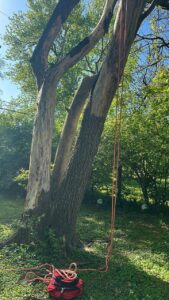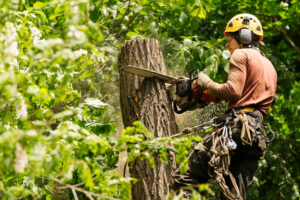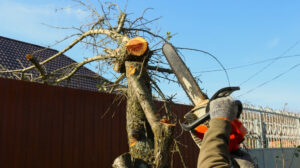Safeguarding Your Trees: Common Diseases in Suffolk and How to Treat Them
Welcome to our detailed guide on protecting trees in Suffolk from common diseases. Trees are vital to our environment, offering oxygen, shade, and beauty. They are, however, not immune to illnesses. This article explores prevalent tree diseases in Suffolk, their symptoms, and effective treatment and prevention strategies.
Overview of Common Tree Diseases in Suffolk
Suffolk boasts diverse tree species such as oak, elm, maple, and cherry. While these trees enhance our landscape, they also face threats from various diseases. Understanding these diseases can help you take appropriate measures to protect your trees.
1. Oak Wilt
Oak wilt is a serious threat to oak trees. Caused by the fungus Ceratocystis fagacearum, this disease is spread by beetles. The initial symptoms of oak wilt include wilting and browning of leaves, particularly in the upper canopy. As the disease progresses, it can lead to complete canopy death, ultimately killing the tree.
Signs and Symptoms
Early signs of oak wilt include:
- Wilting leaves
- Brown patches on leaves
- Premature leaf drop
The disease often starts in the upper canopy and gradually moves downward. Infected trees might show a distinct pattern of dieback, with entire sections of the tree wilting simultaneously.
Causes
Oak wilt is spread by beetles that carry fungal spores from infected trees to healthy ones. The fungus invades the vascular system of the tree, disrupting water and nutrient flow. It can also spread through root grafts between nearby oaks.
Treatment
Treatment for oak wilt involves:
- Immediate Action: Remove and destroy infected trees to prevent the disease from spreading.
- Fungicide Application: Apply systemic fungicides to healthy trees as a preventive measure.
- Professional Help: Consult an arborist for tailored treatment plans and recommendations.
Prevention
To prevent oak wilt:
- Avoid Injuries: Minimize injuries to trees, as wounds can facilitate fungal entry.
- Use Proper Pruning Techniques: Prune oak trees during the dormant season.
- Monitor Trees: Regularly inspect trees for early signs of disease.
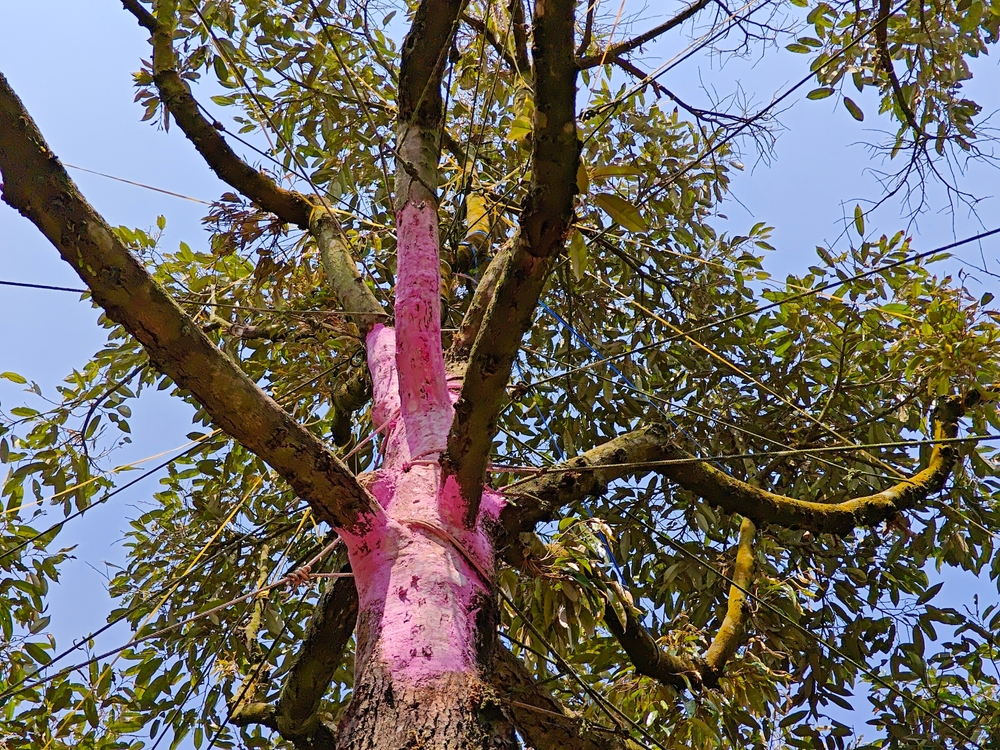
2. Dutch Elm Disease
Dutch elm disease, caused by the fungus Ophiostoma novo-ulmi, is a major problem for elm trees. Spread by elm bark beetles, this disease first shows as wilting and yellowing leaves in the tree’s upper canopy. If untreated, it causes leaf browning, premature leaf drop, and can eventually kill the tree.
Signs and Symptoms
Symptoms of Dutch elm disease include:
- Yellowing and wilting of upper canopy leaves
- Brown or black streaks in the inner bark
- Premature leaf drop
The disease progresses rapidly, with infected trees showing a sudden decline in health. The symptoms typically start in the upper branches and move downward.
Causes
Dutch elm disease is transmitted by beetles that feed on infected trees and then move to healthy ones. The fungus blocks water and nutrient flow within the tree, leading to its decline.
Treatment
Treatment options include:
- Removal of Infected Trees: Cut down and destroy infected elms to prevent disease spread.
- Insecticide Application: Use insecticides to control beetle populations.
- Fungicide Treatment: Apply systemic fungicides to healthy elms as a preventive measure.
Prevention
Prevent Dutch elm disease by:
- Monitoring Trees: Regularly check for early signs of disease.
- Controlling Beetles: Use insecticides to manage beetle populations.
- Proper Tree Care: Maintain tree health with appropriate watering and fertilization.
3. Anthracnose
Anthracnose is a fungal disease that affects various trees, including maples, sycamores, and ashes. Caused by Apiognomonia errabunda, anthracnose thrives in wet spring conditions. Symptoms include brown leaf spots, wilting, and defoliation. Without treatment, anthracnose can lead to stunted growth and even death.
Signs and Symptoms
Common signs of anthracnose are:
- Brown or black spots on leaves
- Wilting and curling of affected leaves
- Premature leaf drop
The disease often causes irregular leaf spots and can defoliate trees entirely in severe cases.
Causes
Anthracnose spores spread through rain and wind, infecting trees during wet spring weather. The fungus attacks the leaves, causing lesions and eventually leading to leaf drop.
Treatment
Treatment involves:
- Fungicide Application: Apply fungicides during active disease periods.
- Leaf Removal: Rake and dispose of fallen leaves to reduce spore levels.
- Proper Watering: Water trees at the base to avoid wetting the foliage.
Prevention
To prevent anthracnose:
- Avoid Overhead Watering: Water trees at the base to keep foliage dry.
- Promote Air Circulation: Space trees adequately to improve airflow.
- Use Resistant Varieties: Select tree species and varieties resistant to anthracnose.
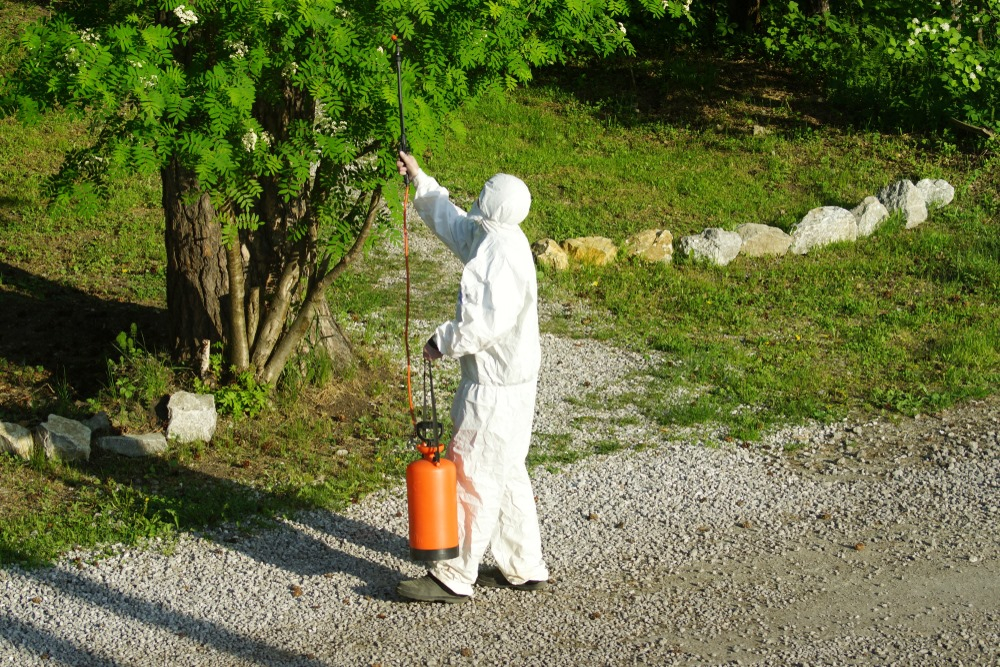
4. Powdery Mildew
Powdery mildew affects various trees, including cherries, dogwoods, and oaks. This fungal disease is characterized by a white, powdery coating on leaves and shoots. Although it doesn’t usually kill trees, powdery mildew can weaken them and make them more prone to other diseases.
Signs and Symptoms
Signs of powdery mildew include:
- White, powdery substance on leaves and stems
- Deformed or stunted growth
- Reduced leaf size and premature leaf drop
The disease typically appears on the upper surfaces of leaves, giving them a dusty appearance.
Causes
Powdery mildew thrives in warm, dry conditions. The fungus spreads through airborne spores that land on susceptible plant surfaces, leading to infection.
Treatment
Treat powdery mildew with:
- Fungicide Application: Use fungicides specifically designed for powdery mildew.
- Pruning: Remove and dispose of infected plant parts to reduce spore sources.
- Improved Air Circulation: Increase airflow around trees by pruning dense foliage.
Prevention
To prevent powdery mildew:
- Watering Practices: Water at the base to avoid creating a moist environment on foliage.
- Proper Spacing: Space trees and plants to improve air circulation.
- Fungal Resistant Varieties: Choose tree varieties less susceptible to powdery mildew.
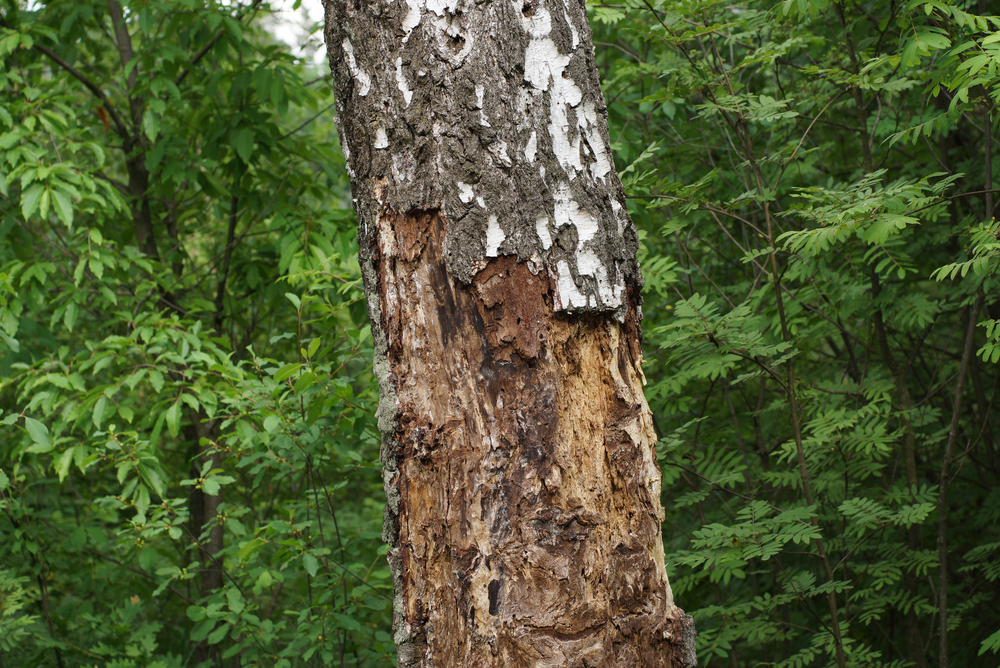
5. Fire Blight
Fire blight is a bacterial disease affecting apple, pear, and crabapple trees. Caused by Erwinia amylovora, it thrives in warm, wet conditions. Symptoms include blackened, wilted leaves and shoots. If left untreated, the disease can spread to branches and kill the tree.
Signs and Symptoms
Fire blight symptoms are:
- Blackened, shriveled leaves and shoots
- Water-soaked lesions on branches
- Branch dieback and eventual tree death
The disease often starts with blossoms and progresses to branches, causing widespread damage.
Causes
Fire blight spreads through rain and insects. The bacteria enter through flower blooms and wounds, rapidly infecting and destroying plant tissues.
Treatment
Treat fire blight by:
- Pruning Infected Parts: Cut away and dispose of infected branches.
- Bactericide Application: Use bactericides to protect healthy plants.
- Tree Management: Avoid excessive nitrogen fertilization, which can promote disease spread.
Prevention
Prevent fire blight by:
- Pruning Techniques: Prune trees during dry weather and sterilize tools between cuts.
- Disease-Resistant Varieties: Plant tree varieties less prone to fire blight.
- Proper Tree Care: Maintain overall tree health through proper watering and fertilization.
Conclusion
Trees play a crucial role in our environment, offering numerous benefits. Protecting them from diseases is essential for maintaining their health and longevity. By understanding common tree diseases in Suffolk and implementing appropriate tree treatment and prevention strategies, you can help ensure the vitality of your trees. If you observe any signs of disease, seek professional advice promptly. Remember, a healthy tree contributes to a healthier environment.

